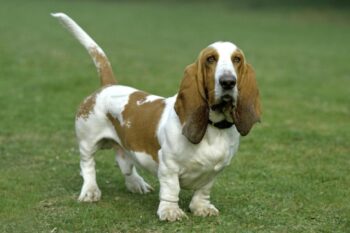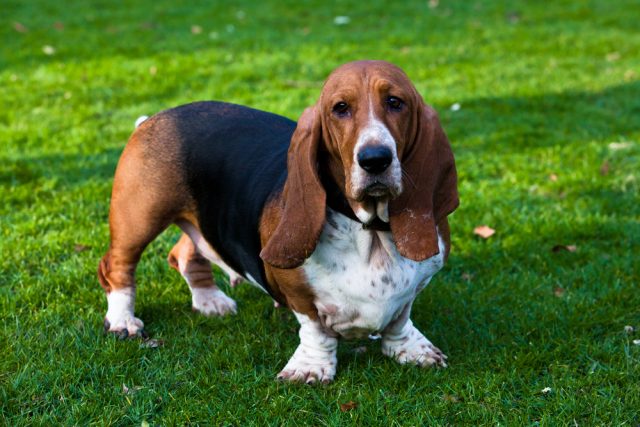
Basset Hounds are known for their charming droopy eyes, long ears, and low-slung bodies. While they make wonderful and affectionate companions, like all dogs, they have specific needs when it comes to outdoor bathroom breaks. In this comprehensive guide, we will explore how often you should take a Basset Hound outside to pee, considering their age and individual factors. Understanding your Basset Hound’s bathroom needs is essential to ensure their well-being and maintain a clean and comfortable living environment.
The Basics of Basset Hound Bathroom Habits
Before diving into the specific recommendations for different age groups of Basset Hounds, let’s first understand some fundamental aspects of their bathroom habits.
- Basset Hounds and Their Bladder Size: Basset Hounds have relatively small bladders compared to their larger body size. This means that they may need more frequent bathroom breaks compared to larger breeds.
- Scenting Instinct: Basset Hounds have an exceptional sense of smell, which makes them prone to being easily distracted by scents outdoors. This can affect their focus on eliminating when you take them outside, so patience is key.
- Housetraining: Like all puppies, Basset Hound puppies require more frequent trips outside to establish good housetraining habits. Consistency and positive reinforcement are crucial during this phase.
Now, let’s break down the recommended bathroom frequencies for Basset Hounds of different age groups: puppies, adults, and senior dogs.
Basset Hound Puppies
Puppyhood is a crucial stage for Basset Hounds as it sets the foundation for their future behavior and housetraining. During this time, puppies have smaller bladders and less control over their bodily functions, so they need more frequent bathroom breaks.
- Age 8-12 Weeks: Basset Hound puppies in this age group typically need to go outside to pee every 1-2 hours. Their small bladders fill up quickly, and they may not be able to hold it for extended periods.
- Age 3-6 Months: As your Basset Hound puppy grows, their bladder capacity increases, and they can hold it for longer. You can gradually extend the time between bathroom breaks to around 2-4 hours. However, it’s essential to monitor your puppy’s behavior and adjust the frequency based on their needs.
- Age 6-12 Months: By the time your Basset Hound reaches 6-12 months of age, they should be able to go outside to pee every 4-6 hours. However, individual variations exist, so pay attention to your puppy’s signals and adjust accordingly.
Tips for Housetraining Basset Hound Puppies:
- Establish a consistent routine: Take your puppy outside at the same times each day, such as after waking up, after eating, and before bedtime.
- Use positive reinforcement: Reward your puppy with treats and praise when they eliminate outdoors. This helps reinforce good bathroom habits.
- Supervise closely: Keep a watchful eye on your puppy when they’re indoors to prevent accidents. If you notice any signs of needing to pee (sniffing, circling, or whining), take them outside immediately.
- Be patient: Housetraining takes time, and accidents are a part of the process. Avoid scolding your puppy for accidents, as this can create anxiety and hinder progress.
Basset Hound Adults
As Basset Hounds transition from puppyhood to adulthood, their bladder capacity and control improve. However, it’s essential to maintain a regular bathroom schedule to meet their needs and prevent accidents.
- Age 1-3 Years: Adult Basset Hounds typically need to go outside to pee every 4-6 hours. This frequency is suitable for most healthy adult dogs, but individual variations may exist. Pay attention to your dog’s behavior and adjust accordingly.
- Active vs. Sedentary Lifestyle: The activity level of your Basset Hound can affect their bathroom needs. More active dogs may need to eliminate more frequently than those with a sedentary lifestyle.
- Water Intake: Keep an eye on your Basset Hound’s water intake. If they drink more water than usual due to hot weather or increased activity, you may need to take them out more frequently.
- Medical Conditions: Some medical conditions, such as urinary tract infections, diabetes, or kidney issues, can affect a Basset Hound’s urinary habits. If you notice any changes in your dog’s bathroom behavior, consult your veterinarian.
Tips for Maintaining Bathroom Breaks for Adult Basset Hounds:
- Stick to a routine: Consistency is key. Take your adult Basset Hound outside at regular intervals, such as after meals and before bedtime.
- Monitor for signals: Be attentive to your dog’s cues. If they start whining, pacing, or scratching at the door, it’s a sign that they need to go outside.
- Use positive reinforcement: Continue to reward your adult Basset Hound with praise and treats when they eliminate outdoors to reinforce good behavior.
- Provide access to water: Ensure that your dog has access to fresh water at all times, especially during warm weather or after exercise.
Basset Hound Senior Dogs
As Basset Hounds age, their physical capabilities may change, including their ability to control their bladder. It’s essential to be mindful of their evolving needs and adjust their bathroom schedule accordingly.
- Age 7 Years and Older: Senior Basset Hounds may experience changes in bladder control and may need more frequent bathroom breaks. Aim to take them outside to pee every 4-6 hours, but be prepared to adjust based on their individual needs.
- Mobility Issues: Some senior Basset Hounds may develop arthritis or other mobility issues that make it challenging for them to get outside. In such cases, consider providing easy access to a designated bathroom area in your yard or home.
- Health Check-ups: Regular veterinary check-ups become even more critical for senior dogs. Discuss any changes in urination habits or signs of discomfort with your vet to rule out underlying medical issues.
- Incontinence: Senior Basset Hounds are more prone to urinary incontinence. If your dog frequently has accidents indoors, consult your veterinarian for potential treatments or management strategies.
Tips for Caring for Senior Basset Hounds:
- Adapt to their needs: Be patient and understanding of your senior dog’s limitations. Accommodate their physical changes and make necessary adjustments to their routine.
- Provide a comfortable environment: Ensure your senior Basset Hound has easy access to water and a cozy, accessible resting area.
- Use ramps or steps: If mobility is an issue, consider using ramps or steps to help your senior Basset Hound navigate stairs or get in and out of vehicles.
- Regular exercise: Although senior dogs may be less active, they still benefit from regular, gentle exercise to maintain muscle tone and overall health. However, avoid overexertion.
Conclusion
Understanding how often to take your Basset Hound outside to pee is crucial for their well-being and your peace of mind. By considering their age, individual needs, and health status, you can create a suitable bathroom schedule that keeps your Basset Hound comfortable and helps prevent accidents indoors. Remember that patience, consistency, and positive reinforcement are key elements of successful housetraining and maintaining good bathroom habits throughout your Basset Hound’s life. With proper care and attention, you can ensure a happy and healthy relationship with your beloved Basset Hound.
The post How Often Do I Take a Basset Hound Outside to Pee? appeared first on iHeartDogs.com.
via Whisker Therapy
